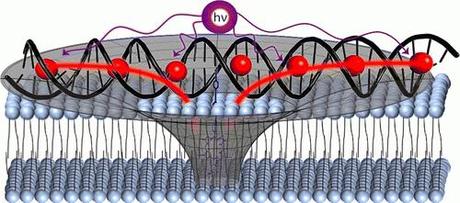
We've discussed quite a few research updates on the topic of artificial photosynthesis which is fast becoming an area of interest in the PV scientific research community. This whole solar energy production stuff could easily and very efficiently be solved if there could be a way to mimic what plants do --
which is produce energy from photons of light with oxygen as a by product i.e. convert solar energy into fuel.
But that is not as easy as this paragraph was written.
Looking into this are researchers at Chalmers University of Technology. They have basically made a nanotechnological breakthrough in the first step required for artificial photosynthesis. The team has demonstrated that it is possible to use self-assembling DNA molecules as scaffolding to create artificial systems that collect light. The results were recently published in the scientific Journal of the American Chemical Society (reference). The system works in the same way as scaffolding in plants and algae. Which consists of a large number of proteins that organize chlorophyll molecules to ensure effective light collection.
"We can move energy to a reaction centre, but we have not resolved how the reactions themselves are to take place there,"..."This is actually the most difficult part of artificial photosynthesis. We have demonstrated that an antenna can easily be built. We have recreated that part of the miracle." says Bo Albinsson, professor of physical chemistry and head of the research team (reference).
Original article sources: Phy dot org, sciencedaily
Image source: Journal of the American Chemical Society
